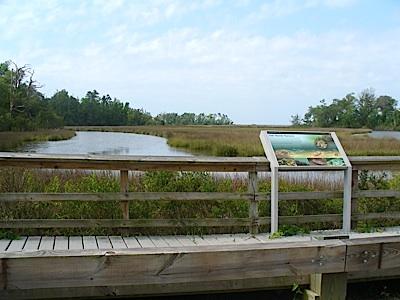Editor's note: Traveler's lodging experts, David and Kay Scott, are out on the road visiting national park lodges to update their book, The Complete Guide to the National Park Lodges. As they travel the park system, they'll occasionally bring us up to date on what they've come upon.
Greetings from Austin, Texas, home of the state capitol, Dell Computer, and the University of Texas Longhorns. This is the third night of our road trip to visit America’s national park lodges. After two warm days, Texas greeted us with cloudy skies, occasional mist, and cool temperatures.
The initial night of our trip was spent tenting in the Mississippi section of Gulf Islands National Seashore. This NPS unit includes a large and better-known segment along the Florida panhandle near Pensacola, and a separate section along the Mississippi coast.
From what we were able to gather, the Mississippi property (which consists of five barrier islands stretching from Pascagoula to Gulfport, plus a small coastal section near Ocean Springs), was acquired following 1969 hurricane Camille that ravaged this section of the Gulf Coast.
Two of the barrier islands included in the national seashore are now considered wilderness areas, while a third island, West Ship, is served by a passenger ferry based in Gulfport, Mississippi.
West Ship Island is home to Fort Massachusetts, one of several 1800s brick forts designed to protect U.S. coastal waters. Construction on the fort was completed in 1866, but like its sister Fort Jefferson in the Florida Keys, it was never fully armed with cannon defenses.
The campground where we stayed is located in the Davis Bayou unit, a short distance east of Biloxi, Mississippi. This is an unusual NPS campground in that each of the 51 sites is equipped with electric and water. In addition, the bathhouse has hot-water showers, an unheard of luxury in most NPS campgrounds.
Operated by the NPS, not a concessionaire, the overnight charge is $16 (half price with a senior pass), a pretty good deal considering the access to electricity and hot showers. There is no entrance charge.
So, what’s the story behind such luxury in a campground operated by the National Park Service?
The campground was built by the Civilian Conservation Corps in the 1930s and became part of Magnolia State Park before being purchased in 1971 by the National Park Service. Paved camping pads were added and the electrical service was subsequently upgraded. A limitation of 30 nights camping is imposed except during three months of winter when a 14-day limit applies. Reservations are not accepted and we had some concern the campground would be full upon our Saturday afternoon arrival. We lucked out and five or six spots remained open, so we set up the tent under a large magnolia tree.
The impressive visitor center in this relatively small unit reopened in March following a complete interior renovation undertaken following flooding caused by hurricane Katrina in August 2005. Bright new interactive exhibits make this a pleasant visit. A large back deck offers visitors a good view of the marsh and Gulf coastline. Large casinos, for which Mississippi has become well-known, are visible in the distance.
The drive west on I-10 reminded us of how unpleasant and boring it is to drive extended periods on most interstate highways. There is probably none worse than I-10 that offers speeding trucks, too many ugly billboards, and an endless flat landscape surrounded by pine trees.
We filled up with gasoline just west of the Texas state line for $3.69 per gallon. One station in Mississippi had a posted price of $3.65, the least expensive gas we have seen since leaving home.




Comments
We have decided to keep up with your trip as a reader this year.We missed a lot of your last trip and vow to "ride along" with you this time. Thanks for such practical tips; they will be particularly helpful when you get a bit closer to our area in the Northwest.